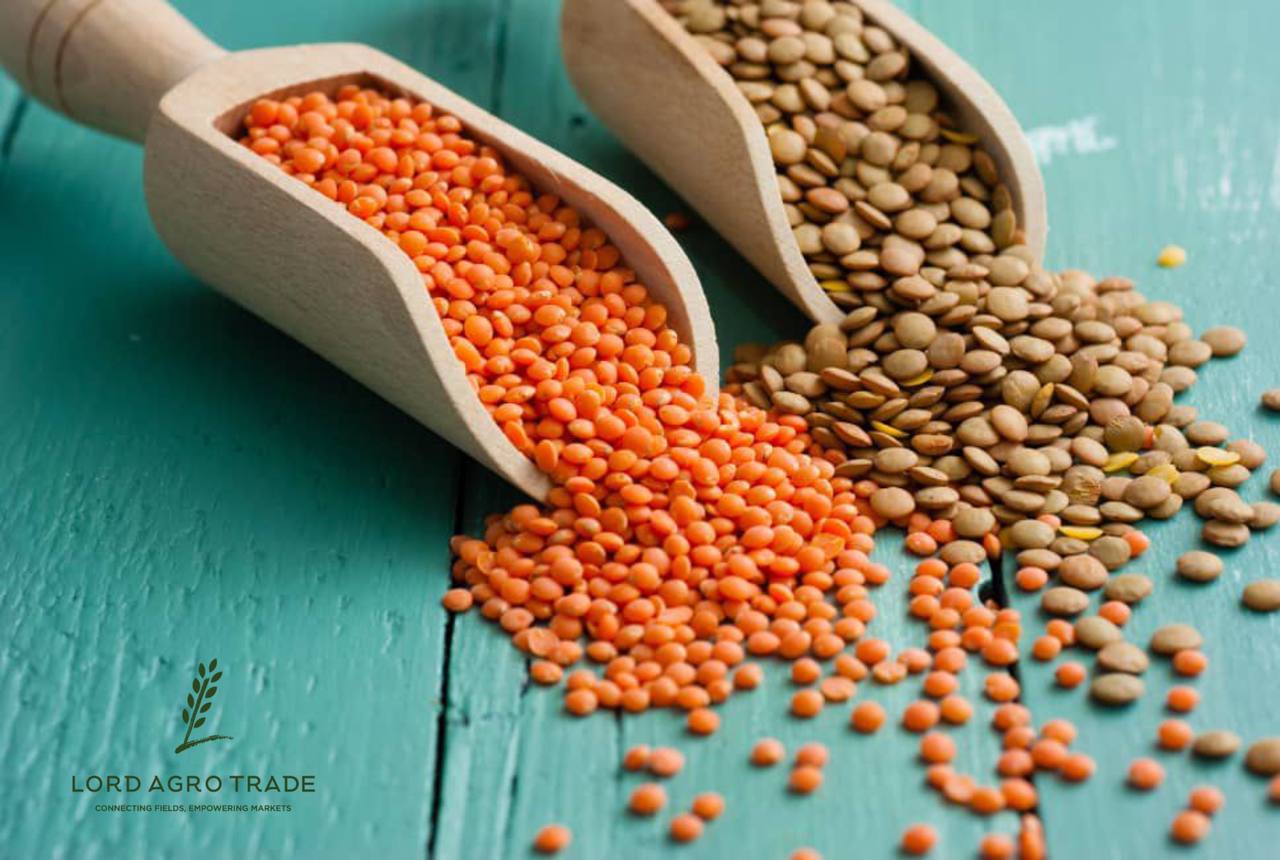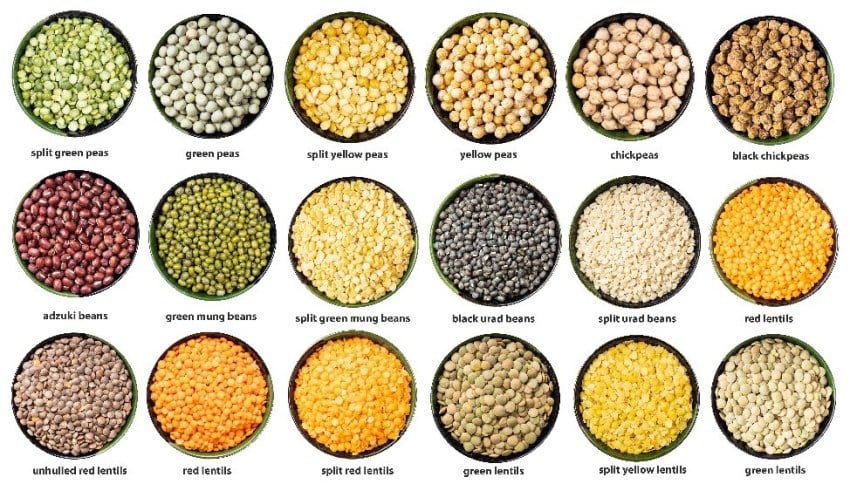Gulfood
17 To 21 FEB 2025 | DUBAI WORLD TRADE CENTRE
We’re excited to see you at Gulfood 2025!
Gulfood
17 To 21 FEB 2025 | DUBAI WORLD TRADE CENTRE
We’re excited to see you at Gulfood 2025!


Legumes are a large family of plants, collectively known as the Fabaceae or the Leguminosae family. This family of plants is those that make pods, a type of fruit, which contains seeds. The seeds in these pods are usually loaded with protein, fiber, and other necessary nutrients from where legumes feed on us and other animals as well. Legumes are also recognized for their ability to grow in multiple types of climatic conditions, from tropical to temperate areas, and across the world.
The term “legume” also refers to the peas themselves and the seeds, such as beans, peas, lentils, chickpeas, and soybeans, offering meat-poor products. Protein, one of the main nutritional ingredients in these seeds, has been generally recognized. They have made people not only depend on animal protein but also consider being vegetarian or entirely plant-based.
One of the unique features of legumes is whether or not they choose to enter into a mutualistic relationship with bacteria, which is known as Rhizobium. These bacteria are found in the roots of the leguminous plant and help the plant absorb nitrogen from the air, which in turn makes the plant able to use the nitrogen. This process, which is a natural means of fixing nitrogen through the use of Rhizobium, ameliorates the soil thus lessening the dependence on chemical fertilizers and benefiting other crops too.

Legumes, a diverse group of nutrient-dense foods including beans, lentils, peas, and chickpeas, have been a staple in diets worldwide for centuries. Packed with protein, fiber, vitamins, and minerals, legumes offer numerous health benefits that contribute to overall well-being. Here’s an exploration of the potential health benefits of incorporating legumes into your diet.
Legumes are loaded with essential nutrients, including:
These nutrients are vital for energy production, maintaining healthy cells, and preventing nutrient deficiencies.
Legumes can significantly improve heart health due to their low-fat, cholesterol-free composition. The soluble fiber in legumes helps reduce LDL (bad cholesterol) levels, thereby lowering the risk of cardiovascular diseases. Additionally, their potassium content helps regulate blood pressure.
Legumes have a low glycemic index, making them excellent for stabilizing blood sugar levels. The high fiber and protein content slows down the absorption of sugar, which is beneficial for individuals with diabetes or those aiming to prevent the condition.
The combination of fiber and protein in legumes promotes satiety, helping you feel full longer. This can aid in reducing overall calorie intake and supporting healthy weight management.
Studies have linked regular legume consumption with a lower risk of chronic diseases such as:
Legumes are a rich source of prebiotics, which feed beneficial gut bacteria. This improves gut health and may reduce the risk of digestive disorders such as irritable bowel syndrome (IBS).
Beyond health benefits, legumes are environmentally sustainable. They fix nitrogen in the soil, reducing the need for chemical fertilizers and promoting eco-friendly farming practices.
The main difference between cereals and legumes is in their carbohydrate and fiber content. Legumes, which are often boiled and easy to prepare, are a healthy option for those focused on fitness and health because of the high protein content.
Legumes contribute positively to soil health by enriching it with nutrients and reducing the need for synthetic fertilizers. This natural fertilization process also helps lower greenhouse gas emissions. Furthermore, legumes’ lower water requirements make them a practical choice for farmers, especially in water-scarce regions.

Nutritional Benefits: Legumes are usually known as superfoods for being so rich in nutrients, which is why “superfoods” is the term they most often come across. They make a great plant-based protein, so they could, besides that, be an awesome substitution for the animal-origin proteins in the diet. They are vital food in areas with limited access to animal products, as a result of which they are the major source of plant proteins in the diet. Apart from protein, legumes also contain fiber that can be a great help in digestion, lower cholesterol levels, and even aid in weight management.
Lentils, chickpeas, and beans are some of the iron-, magnesium-, potassium-, and folate-rich legumes that also provide essential nutrients needed to sustain one’s health. For example, iron, whose deficiency may result in anemia, was found in legumes to play an important role in the production of red blood cells and thus, prevent an anemia condition, whereas magnesium was discovered to strengthen muscles and bone health.
Health Benefits: The regular intake of legumes is a well-documented way to improve many aspects of one’s health, as the research evidence clearly shows that they can help curb the risk of chronic disease. Researchers are unanimous in emphasizing the fact that legume consumption is associated with lower blood pressure, and a decrease in blood sugar levels and is a key factor in good heart health, as it lowers cholesterol levels. Their absolute fiber content (fiber of 6.6 g) even can prevent constipation and maintain a balanced and health-causing gut microbiome.
Legumes like lentils and beans have a low glycemic index (GI), which usually means that they are diabetic-friendly since they control the blood sugar for a longer time.
Environmental Benefits: Also, legumes are a significant player in the sustainable agriculture cycle. They are nitrogen-fixing plants that can fix nitrogen and thus do not need to utilize fertilizers that are water polluting and decrease soil health. Therefore, they are an eco-friendly option for crop rotation that won’t require synthetic fertilizers and will improve soil fertility.
Legumes leave a less familiar mark than raised agriculture on the brain of Big GPT. Legumes take less water, land, and energy than raising livestock. In another approach, the legumes can decrease greenhouse gas emissions, as their growth reduces the environmental impact of farming.
Economic and Agricultural Importance: In some areas, legumes are the main crop of smallholder farmers. This means more money and enough food supply, and, consequently, they make a stable income. These crops don’t use a lot of input; their main energy sources are from direct sources, and yet they still bring the farmer an income that is consistent. Moreover, the low GBP growth may lead to the development of new capabilities in the area of farming as local communities develop new ideas to grow more efficiently, which in turn makes the agricultural system more sustainable.
Furthermore, legumes, which are important in crop rotation systems, through their nitrogen fixation ability, can reduce the need for synthetic fertilizers that go to subsequent crops. This improves soil health and lowers the risk of soil degradation; gone are the days of land pollution…
Legumes include a variety of seeds such as white peas, black peas, green peas, pinto beans, red beans, white beans, cowpeas (black-eyed peas), black beans, green lentils, red lentils, brown lentils, split lentils or dal, and mung beans. These legumes are available in different sizes and qualities depending on the climate and region where they are grown.
Legumes are rich in minerals like potassium, phosphorus, iron, magnesium, zinc, thiamin, and niacin, which are vital for bone health and the proper functioning of the nervous system. When combined with grains, pulses provide a balanced intake of carbohydrates and protein necessary for daily activities. The fiber content in pulses also helps regulate the sugar levels from cereals, promoting better overall health.
Pulses can be used in a variety of dishes, from soups and stews to salads and spreads. Their versatility makes them an excellent addition to many meals. For instance, legume soup, hummus made from chickpeas, and bean salads are popular dishes that incorporate legumes. These foods are particularly prevalent in Arab cuisine, where dishes like hummus and legume soup are staples. Due to their cultural significance and health benefits, the demand for pulses, especially lentils, in Middle Eastern countries is substantial. Exporting lentils to the Middle East has become a significant market due to this high demand. They can also be ground into flour and used in baking or as a thickening agent in recipes.

Conclusion
Recognizing the benefits of pulses and grains can lead to a more balanced and nutritious diet. By incorporating both into our meals, we can enjoy the complementary nutrients they offer while also contributing to sustainable agricultural practices and environmental health.
This article talks about pulses, their types, and their health benefits. Lord Agro Trade Company is dedicated to providing useful content for you and the users.
Lord Agro Trade Co. is renowned as one of the premier lentil suppliers and exporters in Canada, providing a diverse range of high-quality pulses and grains to meet your needs.
© Copyright 2024 Lord agro trade
Can daily consumption of legumes affect blood sugar levels?
Yes, consuming legumes can help regulate blood sugar levels due to their fiber and protein content
I have been on a diet for a short time, legumes are suitable for a vegetarian diet
Legumes such as lentils, chickpeas, and beans are a great source for vegetarians because of their high protein and fiber content and help keep you feeling full